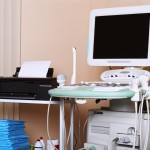
Temporomandibular disorders (TMDs) result in craniofacial pain, limited mouth opening, temporomandibular joint (TMJ) clicks affecting the joint and related structures. A prevalence of between 10% to 70% has been reported, and it particularly effects women aged 20 to 40 years. TMDs can be classified into muscular disorders, internal derangement (ID), inflammatory disease, and osteoarthritis. Internal derangement is common and can cause other TMDs. Magnetic resonance imaging (MRI), computed tomography, arthrography, and ultrasonograpy are all used to image the TMJ. The aim of this review was to assess and explore the reliability of ultrasonography in diagnosing the disc displacement of TMJ.
What did they do
The Medline, Embase and the Chinese Biomedical Literature Databases were searched without language restriction. Diagnostic test accuracy studies that evaluated use of ultrasonography for detecting TMJ disc displacement in patients with any symptoms or clinical signs related to a TMD were included. Studies also needed to use of MRI as the gold standard and include sensitivity, specificity information with abnormal disc locations defined as ID. Review articles, case reports, case series, were excluded. study inclusion, data extraction, and risk of bias assessment was performed by two authors in duplicate.
What did they find
- Fifteen studies (14 cohort studies, 1 case-control study) were included; 6 studies had a low risk of bias, 6 an unclear risk, and 3 a high risk.
- Meta-regression indicated that the detected results were not influenced by the types of ultrasonography, image dimensions, types of transducer, and ultrasonic image of the disc (P > .05).
- The Q* (the point where sensitivity equals specificity on the summary reviewer operator characteristics curve) values of ultrasonography for the closed- and open-mouth positions were 0.79 and 0.91, respectively.
[table id=27 /]
The authors concluded
The diagnostic efficacy of ultrasonography is acceptable and can be used as a rapid preliminary diagnostic method to exclude some clinical suspicions. However, positive ultrasonographic findings should be confirmed by magnetic resonance imaging. Also, the ability of ultrasonography to detect lateral and posterior displacements is still unclear. More high-quality studies are needed to assess the diagnostic efficacies of some specific ultrasonographic methods. Standards and criteria for ultrasonographic techniques in the diagnosis of disc displacement should be established in the future
Chunjie Li, Naichuan Su, Xianrui Yang, Xiao Yang, Zongdao Shi, Longjiang Li. Ultrasonography for Detection of Disc Displacement of Temporomandibular Joint: A Systematic Review and Meta-Analysis. Journal of Oral and Maxillofacial Surgery,
Comment
Previous we higlighted a review by Reneker at al that loked at the ability of existing tests to distinguish between TMDs the focus of this well conducted review only focuses on the detection of TMJ disk displacement and the authors nonote that because,different TMDs often present t similar clinical symptoms differential diagnosis can be difficult and lead to misdiagnosis.
